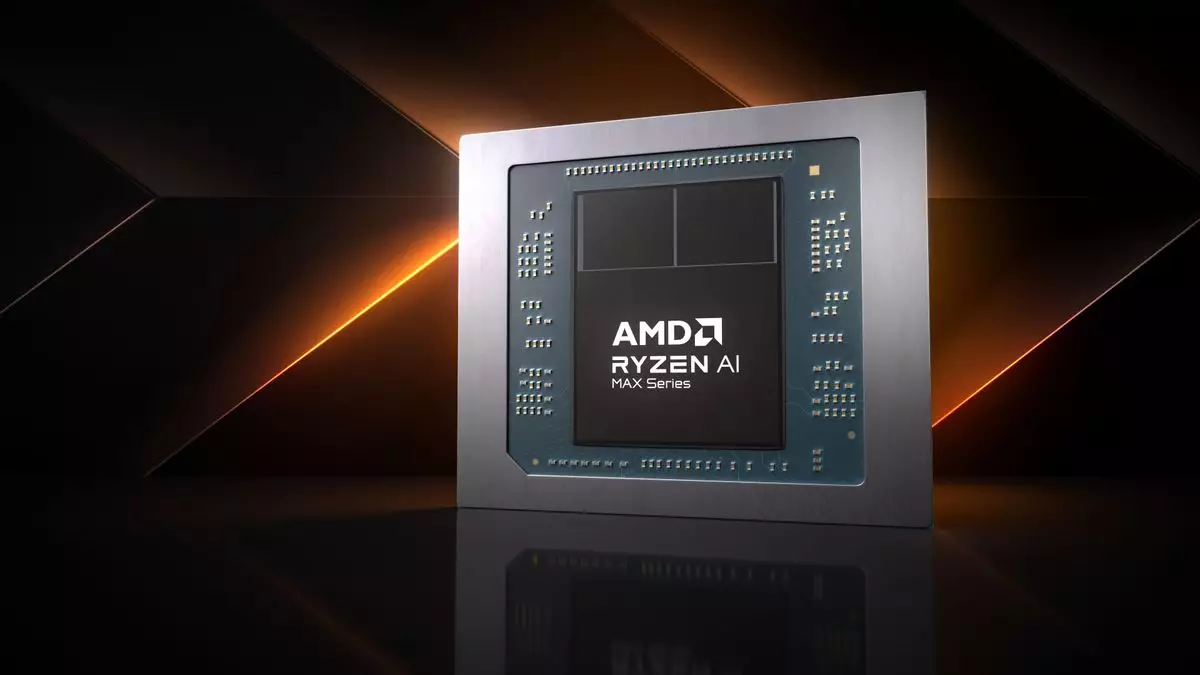AMD is set to revolutionize its lineup with the Strix Halo, an exceptionally large Accelerated Processing Unit (APU) that has recently made headlines following its benchmark results on the 3DMark Time Spy platform. These early performance metrics offer a glimpse into the potential of AMD’s latest technology, showcasing both remarkable capabilities and somewhat tempered expectations. By analyzing the benchmarks and performance claims, we can better understand how the Strix Halo will fit into the current market and what it may mean for gamers and tech enthusiasts alike.
Benchmarking Results Under Scrutiny
The recent benchmarks from 3DMark Time Spy indicate that the Strix Halo achieved a GPU score of 10,106 and a CPU score of 5,571. At first glance, these numbers appear promising, positioning the Strix Halo APU significantly ahead of prior integrated solutions such as the laptop RTX 4050. However, it falls short of the anticipated performance, landing closer to that of the RTX 4060. The discrepancy between expectations and actual performance raises questions about the effectiveness of the technological advancements AMD implemented in this APU.
Interestingly, screenshots shared on Baidu forums suggest some confusion regarding the APU’s specifications, specifically concerning the integrated GPU. Such inconsistencies highlight the complexities and potential issues AMD faces leading up to its launch. Many industry experts regard 3DMark as a useful benchmarking tool for measuring graphical performance; however, they also caution that it should not be viewed as the definitive assessment of gaming dynamics. A more varied testing approach across numerous gaming titles might provide deeper insights into how well the Strix Halo performs in real-world scenarios.
One of the standout features of the Strix Halo is its innovative architecture. Utilizing Zen 5-based CPU Core Complex Die (CCD) and a unique interconnection method, AMD aims to enhance performance while maintaining power efficiency—a crucial factor for laptops. The discussions surrounding the power consumption of this APU reveal that it can be configured to reach up to 120 watts. This flexibility in power settings, while potentially beneficial, could lead to significant performance variances based on thermal management and device configurations adopted by manufacturers.
The engineering challenges involved in developing a bespoke chip are evident, particularly considering that this APU underwent four iterations before achieving satisfactory results. These hurdles underscore the intricate nature of balancing performance capabilities with power consumption and efficiency. As such, potential buyers may be intrigued by promises of enhanced battery life, but they must remain cautious as any changes in power settings can lead to dramatic fluctuations in the gaming experience.
AMD initially positioned the Strix Halo as a competitor to laptop GPUs like the RTX 4070, creating high expectations based on its architecture and enhanced graphical capabilities. However, short-term benchmarks suggest a reality check is in order, placing its performance closer to that of the RTX 4060. This difference raises an important question: Has the jump to a larger APU justified its development in terms of gaming performance, or is it simply a better-designed integrated GPU?
The results may indicate a critical pivot in AMD’s strategy, focusing on making integrated graphics more viable as an alternative to discrete options. This shift is essential, particularly for gamers who prefer lightweight devices without compromising significantly on performance. However, expectations must recalibrate, moving from aspirations of exceeding top-end discrete GPUs to a more pragmatic outlook that emphasizes integrated solutions’ growing capabilities.
While the AMD Strix Halo shows promise with its initial benchmarks, the journey ahead is complex. The discrepancies between projected and actual performance metrics suggest that the development team must remain vigilant in optimizing the APU’s capabilities. As the gaming market increasingly looks for portable solutions that do not compromise performance, the Strix Halo stands at a crossroads where its acceptance will heavily rely on how it performs in comprehensive testing across various gaming titles.
Ultimately, AMD’s ability to harness the Strix Halo’s technological advancements, balancing performance with efficiency, will dictate its acceptance in an ever-evolving landscape of gaming hardware. Only time will tell how this ambitious APU shapes the future of integrated solutions in gaming laptops and tablets.

